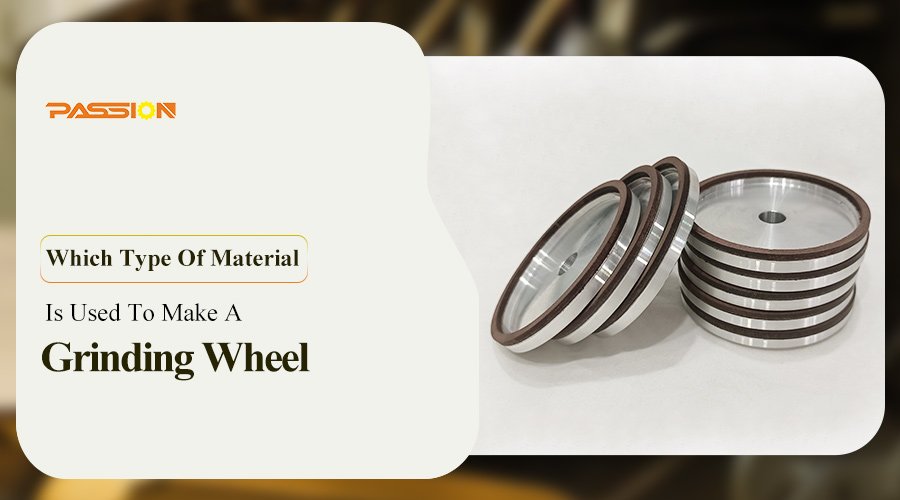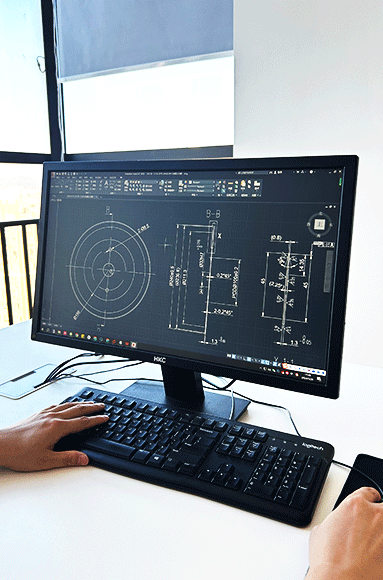Choosing The Right Material For Grinding Wheels In Industrial Applications
Choosing the right material for a grinding wheel is key to getting the best performance out of any grinding application. Different materials have different advantages depending on the type of workpiece, the grinding method, and the finish you’re after. In this guide, we’ll go over the most common materials used in grinding wheels and what makes them special, so you can make the best choice for your specific industrial needs.
Grinding Wheel Materials And Their Characteristics
Grinding wheels are made up of abrasive grains that do the cutting. Here’s a breakdown of the most common materials:
Aluminum Oxide:
What it’s good for: Aluminum oxide is a hard, tough abrasive material. It’s often used for grinding high-tensile strength materials, like steel and other ferrous metals.
Where you’ll see it: You’ll find it in manufacturing processes where you’re grinding tough metals because it can take a lot of pressure.
Silicon Carbide:
What it’s good for: Silicon carbide is an abrasive with sharp edges, so it’s good for cutting into softer metals and non-metallic materials.
Where you’ll see it: It’s great for grinding cast iron, aluminum, brass, and soft non-ferrous metals. It’s also good for materials that would clog up other abrasives.
Cubic Boron Nitride (CBN):
What it’s good for: CBN is the second hardest material behind diamond, so it’s really strong and can handle heat. It doesn’t break down at high temperatures.
Where you’ll see it: You’ll find it in tool and die applications where you’re grinding hardened steel and high-speed steel because it keeps its shape even when you’re grinding for a long time.
Diamond:
What it’s good for: Diamond is the hardest material known to man, so it cuts really well and lasts a long time.
Where you’ll see it: You’ll see it used mostly for really hard materials, like ceramics, stone, and composites. Diamond wheels are great for applications where you need a fine finish or really precise shaping.
Key Components Of A Grinding Wheel
A grinding wheel’s performance is affected by three main elements: abrasive grains, bonding material, and pores. Let’s look at each of these components.
Abrasive Grains:
These grains do the actual grinding work. The type, hardness, and shape of these grains impact the wheel’s cutting ability and durability.
Bonding Material:
his material binds the abrasive grains together. Depending on the type of bond—such as resin, metal, or vitrified—the grinding wheel can vary in flexibility, strength, and heat tolerance.
Pores:
Pores within the wheel structure allow for coolant to circulate, preventing overheating and reducing friction during grinding. These pores help maintain wheel life, as they reduce wear and tear from excessive heat buildup.
How Bond Material Impacts Grinding Performance
Different bond types give you different levels of flexibility and resistance. Here’s a closer look at the most common bond types:
Resin Bond:
These wheels are flexible and can absorb shocks. They’re good for grinding applications where you need a smooth finish.
Metal Bond:
These bonds make super tough wheels that can handle a lot of grinding without breaking down.
Vitrified Bond:
This bond uses clay or glass materials and can handle heavy-duty grinding without losing its shape. It’s good for precision applications where you need the wheel to stay put.
The Role Of Pores In Grinding Wheels
Pores are important in grinding wheels because they let air and coolant flow. This keeps the wheel from getting too hot and clogged up, which can make the wheel not work as well over time. By keeping the wheel at a good temperature, pores also help you get a smoother finish and make the wheel last longer. That’s why they’re important when you’re grinding all the time.
How To Select The Right Grinding Wheel Material
To make sure you’re grinding right, here are some things to think about when you’re picking a material:
How Hard the Thing You’re Grinding Is:
If the thing you’re grinding is really hard, you need a really hard abrasive, like diamond or CBN, so it doesn’t wear out too fast.
How Precise You Need To Be:
If you need to be really precise, you want something like diamond because it gives you a really fine finish.
How Fast You’re Grinding:
If you’re grinding really fast, you need an abrasive grain that can take a lot of wear, like CBN or aluminum oxide.
Picking the right material for your grinding wheel is important if you want it to last and do a good job. From aluminum oxide for tough metals to diamond for the hardest stuff, each one has its own strengths. By knowing what these materials can do, you can make sure you’re getting the best performance and the longest life out of your wheel, no matter what you’re doing.



